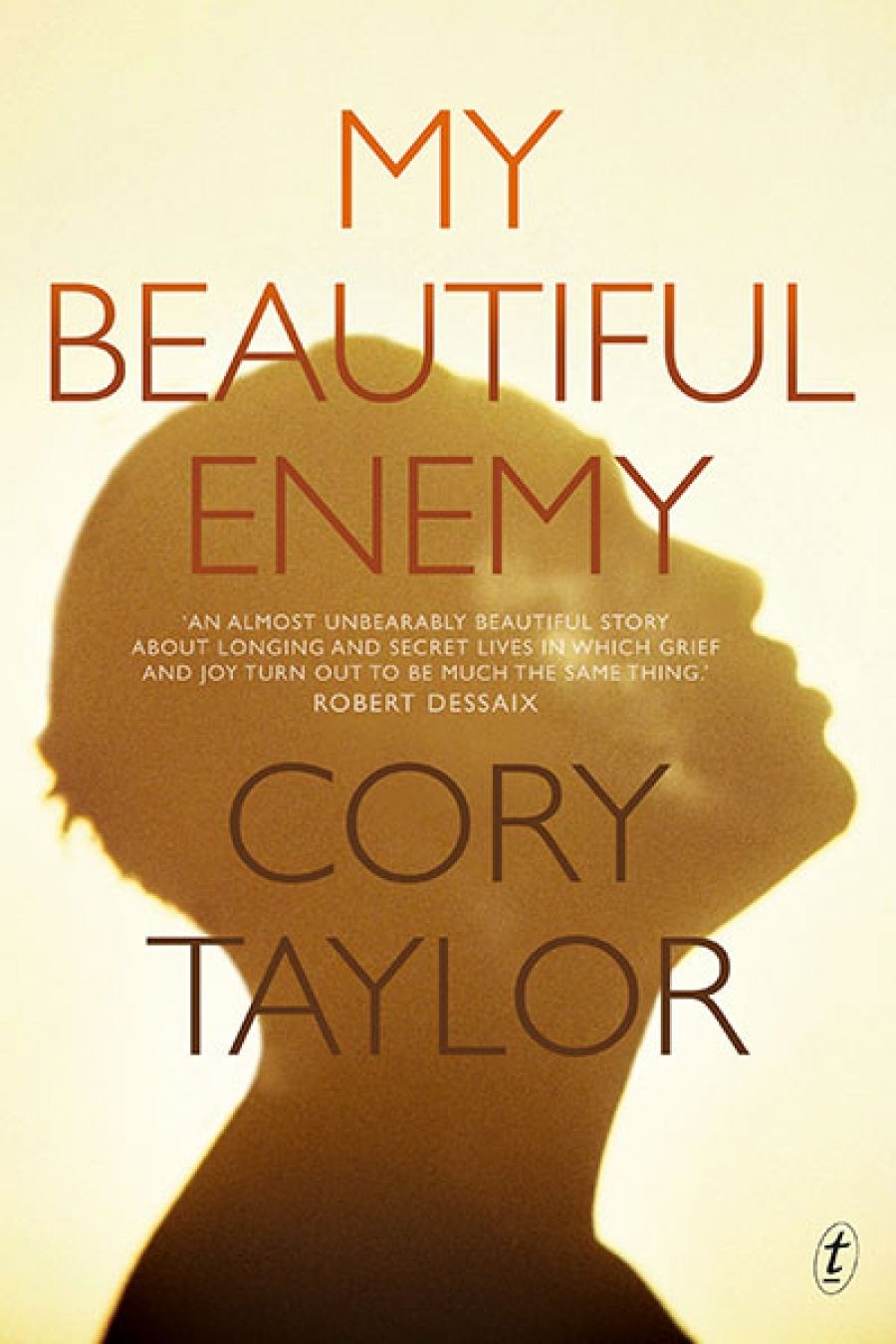
- Free Article: No
- Contents Category: Fiction
- Custom Article Title: Dennis Altman reviews 'My Beautiful Enemy' by Cory Taylor
- Review Article: Yes
- Article Title: Arthur's quest
- Online Only: No
- Custom Highlight Text:
During World War II the Australian government constructed a number of internment camps for ‘enemy aliens’, including ones at Tatura (Rushworth) in Victoria, Hay and Cowra in New South Wales, Loveday in South Australia, and Harvey in Western Australia. Most of those interned were German nationals, and the most famous stories are those connected with Jewish refugees from the ship the Dunera, whose story has been told in a number of forms.
- Book 1 Title: My Beautiful Enemy
- Book 1 Biblio: Text Publishing, $29.99 pb, 272 pp, 9781922079893
Much less well known is the story of the few thousand people of Japanese origin who ended up in camps. In choosing to set her story in the part of Tatura that housed Japanese internees, Cory Taylor has revealed a largely unknown facet of our history. Since even those few Japanese who were Australian-born were sent back to Japan after the war, it is not surprising that their story has vanished from our national consciousness.
Cory Taylor’s first book, Me and Mr Booker (2011), was highly praised and was the Pacific winner in the Commonwealth Book Prize. She has a background as a scriptwriter, and lives part of the time in Japan. Taylor drew much of her background information from Yuriko Nagata’s book Unwanted Aliens: Japanese Internment in Australia (1996), something I only discovered through an ABC interview. While she does acknowledge considerable personal help from Nagata, her book would have benefited from the inclusion of more information on the historical research that underlies it, just as David Guterson provides in his novel Snow Falling on Cedars (1994), which harks back to the internment of Japanese-Americans during World War II.
Tatura in the Goulburn Valley is essentially a backdrop for a love story between two men divided not just by war and race, but equally by the almost total denial of homosexuality in that time and place. My Beautiful Enemy is a sparse, scrupulously written account of the relationship that develops between a naïve young Australian guard, Arthur Wheeler, and a beautiful Japanese-American teenage internee, Stanley, whom he pursues back in Japan several decades after the end of the war.
In the interim, Stanley reluctantly marries his first girlfriend, who becomes pregnant after their first act of intercourse; the marriage fails, and rather inexplicably he remarries twice more, although this is noted almost in passing. Stanley remains in touch with his son, who guesses that his father is basically homosexual, despite Arthur’s reluctance to ever acknowledge this.
I understand that the character of Arthur was inspired by Taylor’s conversations with James Sullivan, who was indeed the youngest guard at Tatura by twenty-odd years, while that of Stanley was inspired both by the story of two brothers, Jack and Charley Takagaki, who were sent out of the camp to attend boarding school in 1943, and by a family of Japanese acrobats who were interned at Tatura.
Less is more, but sometimes less is not enough, and too much is left untold in this story. The relationship between the two boys is moving and absolutely plausible; what is less so is that Arthur, having deserted his wife and son, seems frozen in the heterosexual world of the 1940s for the next twenty years.
This is even more perplexing because it is clear from the earlier part of the book that Arthur was already struggling with his homosexual feelings before he entered the army as a raw recruit. The closest Taylor comes to cliché is in the early chapters when Arthur becomes the protégé of an obviously homosexual neighbour whom his father, predictably, detests. Given that, and given the existence of only partly hidden homosexual underworlds in postwar Australia, there is something deeply unconvincing about Arthur’s apparent lack of interest in seeking out that world after he abandons his wife and child.
The book ends movingly, after a brief and unsuccessful reunion between the two men in Nagasaki, but Taylor tells us too little about either of them in the intervening decades for this meeting to be fully convincing. The strength of her book is in the language and the evocation of two young men on the threshold of adulthood who fall in love in a time and place where this cannot be properly realised.
I wondered in reading My Beautiful Enemy how far there were echoes of Brokeback Mountain, also written by a woman (E. Annie Proulx), which is a short story rather than a novel, and I suspect far more powerful because it does not try to stretch beyond sixty pages. There is no question that Taylor is a gifted writer, whose prose at its best is achingly beautiful. But a novel that seeks to explore homophobia and racism within a historical context requires more than good prose, or ‘exquisitely crafted literary fiction’, as one reviewer put it.
Despite those reservations, I am grateful to Cory Taylor both for drawing my attention to an aspect of our history of which I knew little, but also for capturing so movingly the uncertainty and doubts of young Arthur and his struggle to deal with his infatuation with Stanley and his lack of feelings towards the woman he marries.


Comments powered by CComment